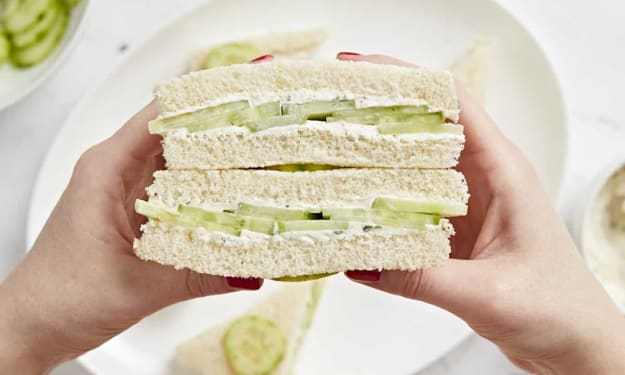Tips for 2024: Guide To Build a Food Delivery Platform Like Deliveroo
Food Delivery apps like Deliveroo

Are you envisioning the creation of a food delivery app similar to Deliveroo? It's time to transform that dream into reality.
With the Deliveroo app, users have the convenience of enjoying meals from their favorite local restaurants, all from the comfort of their own homes. Ordering is a breeze: users select a specific dish or restaurant, peruse the menu, place their order, and await delivery, often within minutes. However, with the emergence of similar apps in the market, competition to maintain a leading position has intensified.
To counter this competition, Food delivery apps like Deliveroo have introduced a range of exclusive features designed to keep customers engaged and coming back for more. Below, we'll take an in-depth look at these features that have contributed to Deliveroo's prominence in the food delivery industry. Let's explore what sets this app apart and how it continues to captivate users.
About Deliveroo App
Deliveroo, a pioneering online food delivery app, was established in 2013 in London. Since its inception, the company has rapidly expanded its operations to encompass numerous countries across Europe, Asia, and the Middle East. Deliveroo quickly garnered favor for its convenient on-demand food delivery app development service, offering users an extensive array of options from local restaurants.
With a user base exceeding 7.4 million in London alone, Deliveroo serves as a crucial intermediary, connecting users with local restaurants, particularly those lacking their delivery services, via its efficient app. This symbiotic arrangement broadens the reach of restaurants while affording customers a wider selection of dining options. Moreover, the app earns commissions on each order, bolstering its unique value proposition.
Market Stats Of the Food Delivery Industry
According to a Crunchbase report, Deliveroo has secured a staggering $1.7 billion in funding across approximately 13 funding rounds. This substantial investment has solidified the company's stature as a prominent player in the food delivery industry. Deliveroo has judiciously utilized these funds to expand its geographic footprint, enhance its technological infrastructure, and implement targeted marketing strategies aimed at attracting a larger user base.
Furthermore, as per Statista, the food delivery market in Europe is poised to reach a valuation of $205.4 billion by 2028, reflecting a robust compound annual growth rate (CAGR) of 9.46% from 2024 to 2028. Given Deliveroo's resounding success and the burgeoning market size, now presents an opportune moment for businesses to capitalize on the burgeoning trend of doorstep dining.
Steps To Develop Deliveroo Clone App
Developing a Deliveroo clone app involves several steps to ensure that the app meets the requirements of users and provides a seamless food delivery experience. Here's a step-by-step guide:
1. Market Research: Conduct thorough market research to understand the dynamics of the food delivery industry, user preferences, competitor analysis, and emerging trends. This will help you identify opportunities and define your app's unique selling proposition.
2. Define Features: Determine the features you want to include in your Deliveroo clone app. This may include user registration, restaurant listings, menu browsing, ordering, payment integration, order tracking, reviews and ratings, and customer support.
3. Choose Technology Stack: Select the appropriate technology stack for your app development, including programming languages, frameworks, and databases. Consider factors such as scalability, security, and platform compatibility (iOS, Android, web).
4. Design User Interface: Design an intuitive and visually appealing user interface (UI) for your app. Create wireframes and prototypes to map out the user flow and ensure a smooth navigation experience for customers, restaurants, and delivery drivers.
5. Develop Backend: Build a robust backend infrastructure to handle user authentication, database management, order processing, payment transactions, and communication between various components of the app.
6. Integrate APIs: Integrate third-party APIs for features such as maps (for location tracking), payment gateways, SMS notifications, and push notifications to enhance the functionality of your app.
7. Develop Frontend: Develop the front end of your Deliveroo clone app for different platforms (iOS, Android, web) using appropriate frameworks and design guidelines. Focus on creating responsive layouts and optimizing performance for a seamless user experience.
8. Testing: Conduct rigorous testing of your app to identify and fix any bugs or issues. Perform functional testing, usability testing, performance testing, and security testing to ensure that your app meets quality standards.
9. Launch: Once testing is complete, prepare for the app launch. Submit your app to the respective app stores (Apple App Store, Google Play Store) and deploy the web version on a hosting platform. Implement marketing strategies to promote your app and attract users.
10. Iterate and Improve: Gather feedback from users and stakeholders after the app launch. Use analytics and user insights to continuously iterate and improve your app's features, performance, and user experience.
By following these steps, you can develop an on-demand food delivery app like deliveroo that offers a seamless food delivery experience and competes effectively in the market.
Why Should People Want To Invest in the Food Delivery Industry?
Investing in the food delivery industry can be lucrative for several reasons:
1. Growing Market: The demand for food delivery services has been steadily increasing, driven by changing consumer lifestyles, urbanization, and technological advancements. This trend is expected to continue, offering ample opportunities for growth in the industry.
2. Convenience: With busy schedules and hectic lifestyles, many consumers prefer the convenience of having food delivered to their doorstep rather than cooking or dining out. Food delivery services cater to this demand by offering a wide range of cuisines and dishes from various restaurants.
3. Technology Adoption: The integration of technology, such as mobile apps and online platforms, has revolutionized the food delivery industry. These technological innovations have made ordering food more accessible and convenient for consumers, leading to increased adoption and usage of food delivery services.
4. Market Expansion: Food delivery platforms have expanded their reach beyond major cities to suburban and rural areas, tapping into previously underserved markets. This expansion has opened up new revenue streams and opportunities for growth.
5. Diverse Revenue Streams: Food delivery companies can generate revenue from various sources, including delivery fees, service charges, commission from restaurants, advertising, and subscription models. This diversification of revenue streams helps mitigate risks and ensures sustainability.
6. Scalability: Food delivery platforms can easily scale their operations by adding new restaurants, expanding delivery areas, and increasing their fleet of delivery drivers. This scalability allows companies to meet growing demand and capitalize on market opportunities.
7. Brand Loyalty: Successful food delivery platforms can build strong brand loyalty among users through personalized recommendations, rewards programs, and excellent customer service. Repeat customers contribute significantly to revenue and profitability.
8. Investor Interest: The food delivery industry has attracted significant interest from investors, leading to substantial funding rounds and valuations for leading players. This investor interest further validates the potential for growth and profitability in the industry.
Overall, investing in the food delivery industry offers the potential for high returns, driven by increasing demand, technological innovation, market expansion, and diverse revenue streams. However, it's essential to conduct thorough research and due diligence before making any investment decisions.
Wrapping Up
The demand for food delivery apps in the market is becoming high. Being a food business owner if you want to develop an app like Deliveroo, it is necessary to follow the competitive procedure. For your understanding, we have explained in detail how to develop the deliveroo clone app.
If you are finding on-demand food delivery app development solutions? Then your search ends here! Connect us with your requirements.
About the Creator
Kathlyn Ocean
I am Kathlyn Ocean, I am a digital marketer at PeppyOcean, a leading on demand grocery and food delivery app development company in India. As a hobby, I like to write and share blogs & articles related to the latest technology.
Enjoyed the story? Support the Creator.
Subscribe for free to receive all their stories in your feed. You could also pledge your support or give them a one-off tip, letting them know you appreciate their work.






Comments
There are no comments for this story
Be the first to respond and start the conversation.